Chai Tea Latte, a delightful fusion of traditional Indian spices and the ever-popular espresso-based latte, has become a staple on Starbucks’ menu worldwide. This aromatic beverage, with its rich flavor profile and unique texture, has garnered a dedicated following amongst coffee and tea enthusiasts alike. In this essay, we’ll delve into the fascinating history of Chai Tea Latte, explore its key ingredients, discuss its nutritional content, and consider the various customization options available at Starbucks. We’ll also provide a simple guide to making Chai Tea Latte at home and compare this Western adaptation with its authentic Indian counterpart.
History of Chai Tea Latte
The chai tea latte is a delicious and popular beverage, rooted in the rich history of Indian tea culture. While the beverage has gained widespread popularity through the Starbucks brand, the story of chai tea can actually be traced back thousands of years. The origins of the drink are found in South Asia, specifically within Indian, Nepalese, and Tibetan cultures.
Chai, which means “tea” in Hindi, is a flavored tea made with a variety of spices such as cinnamon, cloves, cardamom, ginger, and black pepper.
Traditionally, chai is prepared by brewing black tea with a blend of these spices, adding milk, and sweetening with sugar or honey. The method of preparation varies by region in India, with some areas using goat milk or preparing the drink as a herbal infusion. Chai was enjoyed as a social beverage in homes and at tea stalls, known as chaiwallahs, throughout India. With the British colonization of India in the 19th century, the Indian tea industry saw a massive expansion as tea was commercialized and exported to Britain, further popularizing chai.
In the mid-1990s, Starbucks introduced the chai tea latte to its menu, bringing the beverage to the global market. The company’s version is a blend of chai spices, black tea, steamed milk, and sweetener. Starbucks’ chai latte was an instant hit, gaining a dedicated following and propelling the drink into mainstream Western coffee culture. The creation of Starbucks’ chai latte was inspired by the numerous variations of the traditional drink and simplified for the American consumer, marking a significant milestone in chai’s journey across cultures.
The Starbucks chai tea latte has since evolved over the years, with variations now available to accommodate different dietary preferences such as soy, almond, and coconut milk options. Additionally, Starbucks has introduced seasonal and flavored chai latte offerings, such as the pumpkin spice chai tea latte and the chocolate chai tea latte, further broadening the scope of the chai world.
Chai tea latte has become well-known and popular through its presence at Starbucks, but it’s important to remember the history and cultural significance of this warm and comforting beverage. Rooted in Indian tea culture, it has a rich history spanning thousands of years. As Starbucks continues to introduce new variations of this delightful drink, it is essential to appreciate and acknowledge the diverse origins that contribute to its unique and satisfying taste.

Ingredients and Flavor Profile
The Starbucks Chai Tea Latte is a delicious blend of bold and complex flavors, crafted from a selection of key ingredients that create a distinct taste experience. The foundation of this widely-loved beverage is black tea, chosen for its robust and full-bodied flavor profile. As the beverage has evolved, it has continued to incorporate diverse elements from its rich history – a testament to the enduring appeal of this timeless drink.
Chai tea is well-known for its strong, bold taste, and Starbucks sources the highest quality tea leaves to ensure this quality comes through in every cup.
A defining feature of the Chai Tea Latte is its blend of aromatic spices. The precise combination of spices in a chai tea blend can vary, but traditional ingredients include cinnamon, cardamom, cloves, ginger, and black pepper. Starbucks’ recipe has been carefully crafted to strike the perfect balance between these warm, earthy spices, which harmoniously complement the bold flavor of the black tea.
These spices not only add depth and warmth to the latte’s taste but also deliver an inviting, fragrant aroma that awakens the senses even before taking the first sip.
To create the smooth, creamy texture of the Chai Tea Latte, Starbucks skillfully combines the tea and spice blend with steamed milk. The milk not only adds a velvety mouthfeel to the beverage, but it also serves to mellow and temper some of the chai’s more potent flavors. This interplay between milk and spices results in a delicate yet rich taste that offers both sweetness and warmth.
Starbucks offers a range of milk options, including dairy and various plant-based alternatives, allowing customers to tailor their Chai Tea Latte to suit their taste preferences and dietary needs.
Additionally, the Starbucks Chai Tea Latte features just the right touch of sweetness to round out the overall flavor profile. The sweetness highlights the natural flavors of the tea and spices while balancing the boldness of the black tea. Depending on the customer’s preference, this sweetness can be adjusted by ordering the latte with more or less classic syrup, ensuring that each drink is crafted to meet the individual’s taste.
In summary, the Starbucks Chai Tea Latte is a delightful blend of flavors and textures, expertly crafted to provide a truly memorable beverage experience. The robust taste of high-quality black tea pairs perfectly with an array of warm, aromatic spices, creating a rich and comforting drink. The infusion of steamed milk adds a smooth, creamy texture, which complements the flavors of the tea and spices beautifully. By carefully adjusting the sweetness of each latte, Starbucks customers can enjoy a Chai Tea Latte that is tailored to their preferences and uniquely delicious.
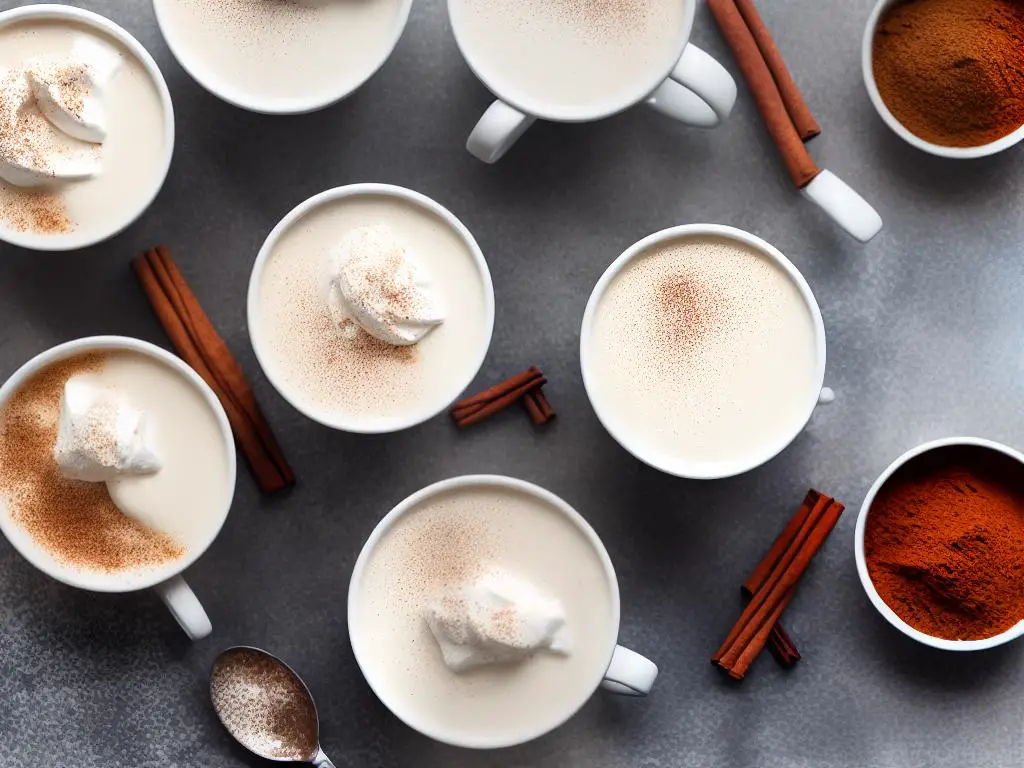
Nutritional Information
Understanding the ingredients and nutritional information of the Starbucks Chai Tea Latte can help you make informed decisions about incorporating it into your daily routine. This popular beverage is made from a combination of spiced black tea concentrate, steamed milk, and sweeteners, and can be customized to suit your taste. Just like any other drink, knowing what goes into your Chai Tea Latte can ensure you create a perfect balance that fits your personal preferences and dietary needs.
A 16-ounce (Grande) Chai Tea Latte made with 2% milk contains 240 calories, with whole milk increasing the calorie count to 270. Non-dairy alternatives, such as Soy or Almond milk, can marginally reduce the calorie content to 230. In terms of fat content, a Grande Chai Tea Latte made with 2% milk contains 4.5 grams of fat, including 2 grams of saturated fat. Switching to whole milk increases the total fat content to 6 grams, while opting for non-dairy alternatives can marginally lower the fat content. For instance, a Soy Chai Tea Latte contains 4 grams of total fat, while Almond milk contains 3.5 grams. A Grande Chai Tea Latte made with 2% milk contains a staggering 42 grams of sugar, almost reaching the recommended daily limit of added sugar intake. Using whole milk pushes the sugar content to 43 grams, while non-dairy alternatives like Soy and Almond milk marginally reduce it to 39 and 38 grams, respectively.
The Starbucks Chai Tea Latte not only offers delightful flavor, but also provides essential nutrients. Rich in calcium, it provides 30% of the daily value requirement. Additionally, when prepared with 2% or whole milk, the Chai Tea Latte packs around 8 grams of protein, or 7 grams when made with soy or almond milk. This popular beverage also contains health-boosting antioxidants, courtesy of the black tea and spices used in the concentrate.
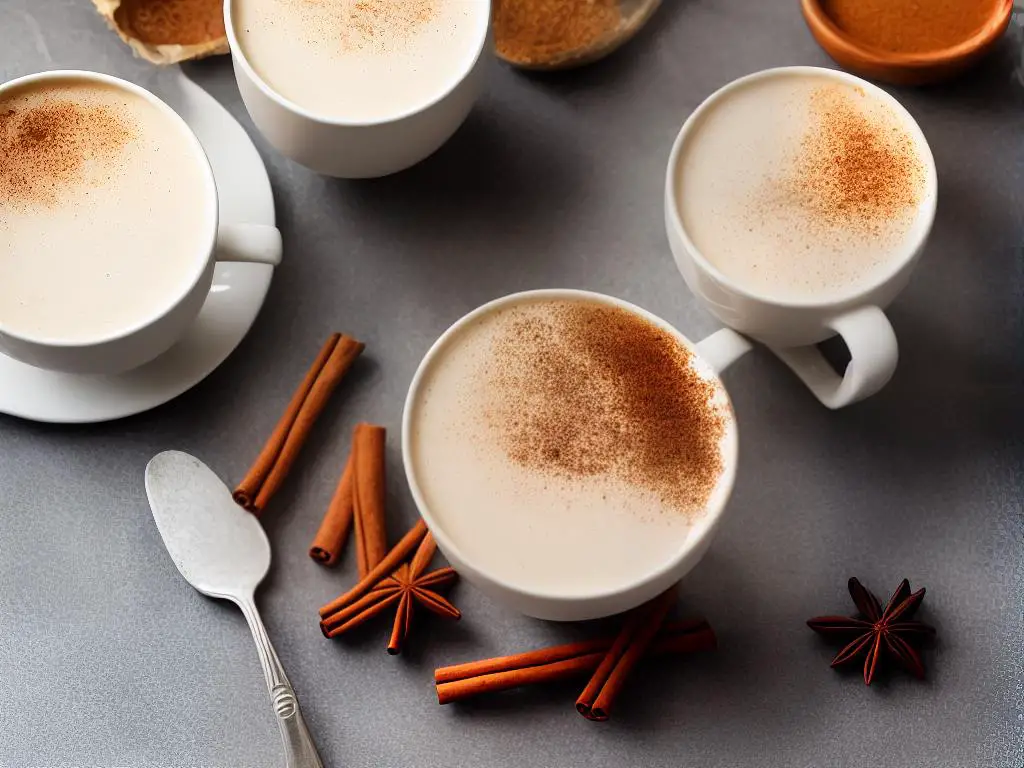
Customization Options
One of the reasons behind Starbucks’ widespread popularity among coffee and tea enthusiasts is the vast array of customization options available for their beverages, with the Chai Tea Latte being a prime example. Customers can make this beverage truly their own by modifying various elements to suit their preferences and requirements.
For those with dietary restrictions or different taste preferences, Starbucks offers a range of milk alternatives such as soy, almond, coconut, and even oat milk. These dairy-free options cater to personal tastes while also adding unique flavor profiles to the chai tea latte, thereby enhancing the overall experience.
In addition to milk choices, Starbucks allows customers to experiment with various flavors that can be added to their chai tea latte. While the standard recipe incorporates a balance of sweet and spicy notes, one may choose to accentuate these flavors with additional syrups or ingredients. For instance, a customer could opt for an extra pump of the chai concentrate to intensify the spiciness or to add a pump of vanilla syrup for added sweetness. Furthermore, during seasonal promotions, Starbucks often introduces limited-time flavors, like pumpkin spice or chestnut praline, that can be incorporated into the chai tea latte for an exciting twist.
Size is another factor that contributes to the customization of Starbucks’ chai tea latte. Whether an individual is seeking a small pick-me-up or a larger beverage to indulge in, Starbucks has something for everyone. Offering the chai tea latte in Tall (12 oz), Grande (16 oz), and Venti (20 oz for hot, 24 oz for iced) sizes, customers have the option to enjoy their drink in the portion that best fulfills their desire. It is important to note that the larger the size, the more pumps of chai concentrate and additional flavorings are included, which could alter the taste.
Another way to modify a Starbucks chai tea latte is by adjusting the drink’s temperature. While a traditional chai tea latte is served hot, it can also be prepared as an iced beverage or a tasty Frappuccino for those warm summer days or for people who simply prefer a cold drink. Having this flexibility allows for a refreshingly diverse experience while still maintaining the familiar and beloved flavors of the chai tea latte.
Starbucks offers various customization options for their popular Chai Tea Latte, allowing customers to explore their taste preferences. Additionally, they often introduce limited-time seasonal adaptations of this beverage, further enhancing its appeal. For instance, during the autumn months, Starbucks is known to offer a Pumpkin Chai Tea Latte, which combines the classic chai flavors with the beloved pumpkin spice. These limited-time offerings continually entice customers to experiment and discover their perfect personalized beverage.
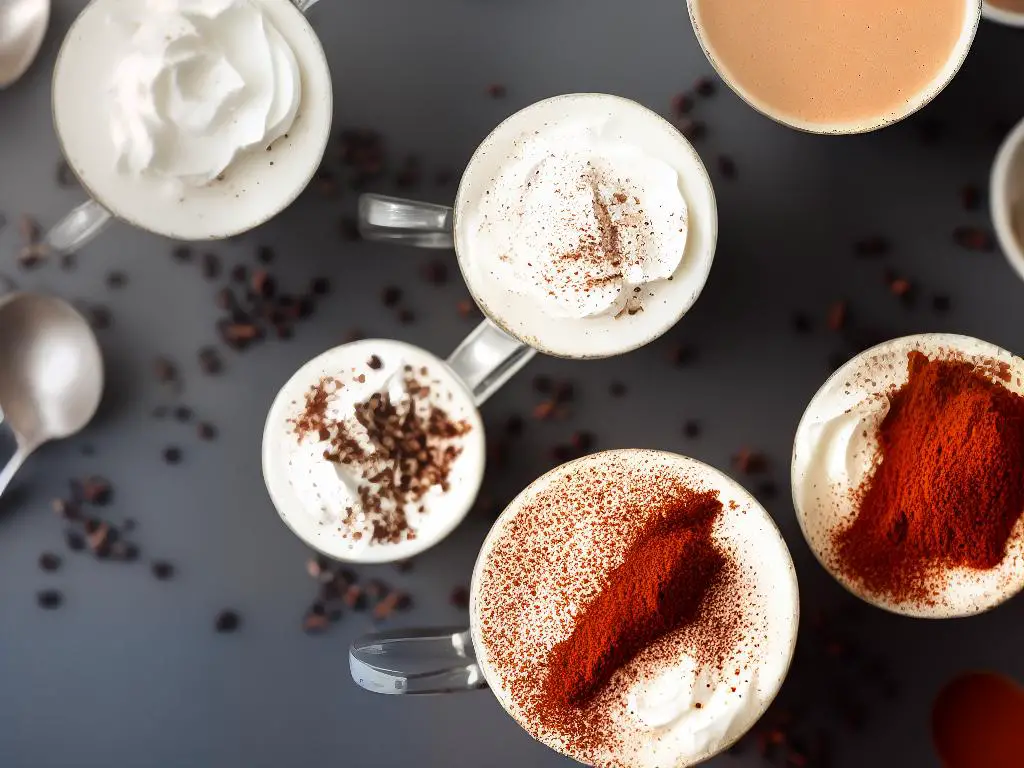
Making Chai Tea Latte at Home
If you’d like to recreate a homemade Starbucks Chai Tea Latte, start by brewing a strong cup of chai tea. You can either purchase chai tea bags from your local grocery store or make your own chai tea blend by combining black tea with spices like cinnamon, ginger, cloves, and cardamom. Allow the tea to steep for 3-5 minutes before removing the tea bag or straining out the spices. For a more authentic taste, you can also use a chai concentrate from brands like Tazo (the one used by Starbucks) or Oregon Chai.
While your chai tea is steeping, it’s time to prepare the milk. Starbucks typically uses 2% milk for their chai tea lattes, but you can use any kind of milk or milk alternative that you prefer, such as whole milk, skim milk, almond milk, or soy milk. Start by measuring out one cup of milk in a saucepan and heating it slowly over medium-low heat. Do not let the milk come to a boil; instead, remove it from the heat just when it’s about to start simmering.Now comes the frothy part of the latte that makes it extra special. To create the foam, you’ll need a milk frother, a whisk, or an immersion blender. If using a milk frother, simply follow the manufacturer’s instructions to froth the heated milk. If you don’t have a milk frother, you can use a whisk by rapidly whipping the milk in a back-and-forth motion. Alternatively, you can use an immersion blender, but be sure to keep the blending head submerged in the milk so that air is being mixed in.Once your milk is frothy, it’s time to sweeten your chai tea latte to your desired level of sweetness. Though many people enjoy their chai tea lattes unsweetened, Starbucks typically sweetens their lattes with a bit of liquid cane sugar, honey, or classic sugar syrup. Start with 1-2 tablespoons of sweetener and adjust according to your preference. Mix the sweetener into the brewed chai tea before adding the frothy milk on top.Pour your frothed milk over the strong, sweetened chai tea, holding back the foam with a spoon as you pour, and then gently spoon the foam over the top to finish off your latte. If desired, you can also sprinkle a bit of cinnamon or nutmeg over the foam for an extra touch of flavor. Congratulations! You’ve just created your very own Starbucks Chai Tea Latte at home using simple ingredients and techniques. Sit back, relax, and enjoy your tasty drink as you’ve just brought the flavor of Starbucks into your own kitchen.
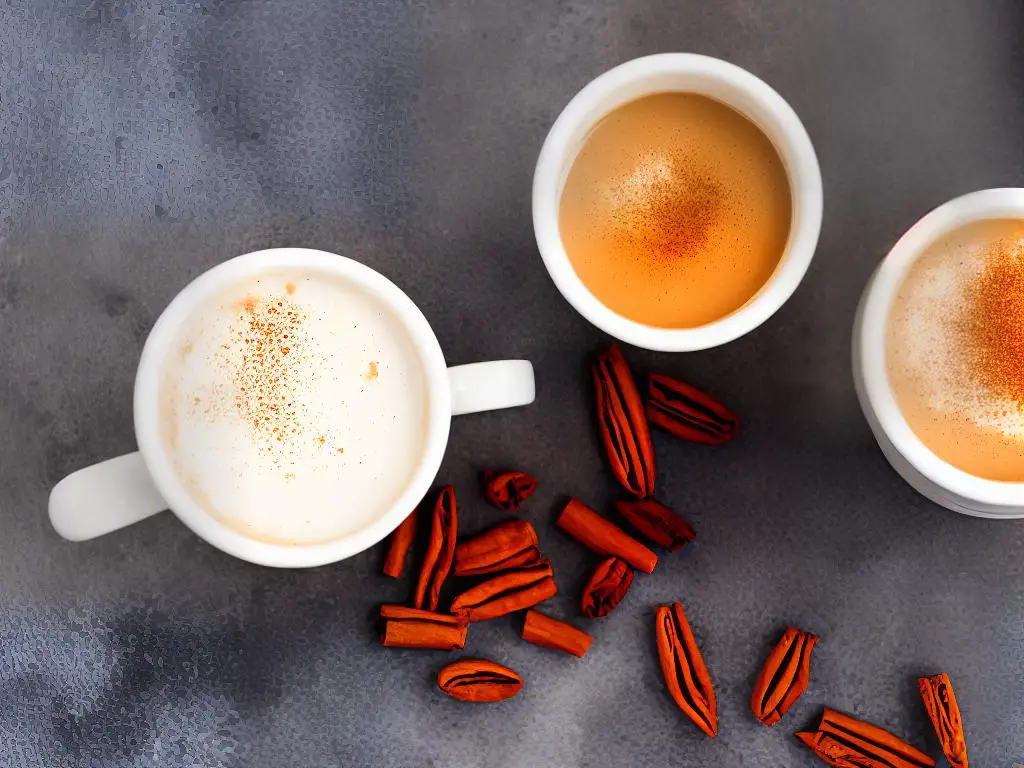
Starbucks vs. Authentic Chai Tea
When comparing a Starbucks Chai Tea Latte to a traditional chai tea, the most notable difference is the taste. Starbucks’ chai tea latte is made primarily from two main ingredients: chai concentrate and steamed milk. The chai concentrate consists of black tea, spices, sugar, and flavored syrup, while traditional chai tea is brewed from loose-leaf black tea with a blend of unique and aromatic spices such as cardamom, cinnamon, ginger, cloves, and peppercorns. In general, authentic chai tea is less sweet than its Starbucks counterpart due to a lower sugar content and the absence of added syrups. Moreover, traditional chai tea typically boasts a bolder, spicier flavor profile stemming from its blend of whole spices, whereas Starbucks’ version is milder and creamier in taste.
The preparation methods for Starbucks Chai Tea Lattes and traditional chai tea also vary greatly. Starbucks uses a more streamlined method that involves combining their pre-made chai concentrate with steamed milk, as well as adding the option of whipped cream on top. This method is convenient for customers, lending itself to the fast-paced environment of a coffee chain. Conversely, preparing authentic chai tea is a time-consuming process that includes simmering loose-leaf black tea and spices together in water for a specific amount of time, then adding milk and sugar, and boiling the mixture again before straining and serving. This slower method allows for the flavors to meld together and develop, creating a richer, more complex taste.
When it comes to the cultural significance of chai tea, it is clear that this beverage holds immense importance in Indian society. Chai, derived from the word “cha,” meaning “tea” in Hindi, has roots in ancient Indian Ayurveda, where it was used for its potential healing properties. Today, chai is consumed in homes and street-side stalls known as “chaiwallahs” throughout India. It is thought to be more than just a beverage; it represents hospitality, friendship, and the warmth of Indian culture. However, the Starbucks Chai Tea Latte may not hold the same cultural value, as it is primarily seen as a Westernized adaptation of the traditional drink.
Comparing the ingredients and methods of preparation between Starbucks Chai Tea Lattes and authentic chai tea further highlights the differences between these two beverages. Traditional chai tea is typically made with whole, fresh spices such as green cardamom, black peppercorns, cinnamon, ginger, and cloves. These spices are crushed before being added to the tea, effectively releasing their flavors and potential health benefits. On the other hand, Starbucks Chai Tea Latte uses a chai concentrate, wherein spices are pre-ground and combined with black tea, sugar, and flavoring syrup. The result is a substantially different taste, one that is significantly sweeter and less spicy than that of traditional chai.
In conclusion, while both Starbucks Chai Tea Lattes and traditional chai tea share origins rooted in the Indian beverage, there are notable differences in taste, preparation methods, and cultural significance. The Starbucks version offers a more convenient, milder, and sweeter take on chai, while traditional chai tea holds true to its cultural heritage, presenting bolder flavors and a more time-consuming preparation process.
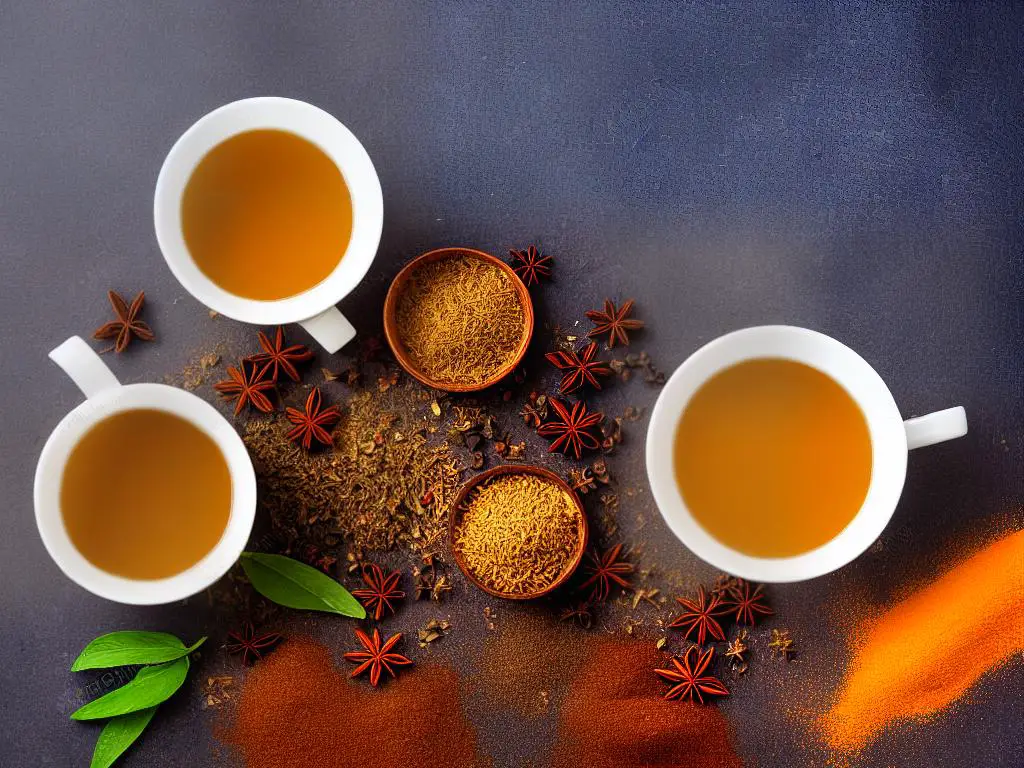
As we journey through the enticing world of Starbucks Chai Tea Latte, it becomes evident that this popular drink has a rich history, distinctive flavor profile, and many ways to be customized to suit individual preferences. Though it may differ from traditional chai tea in various aspects, this Western adaptation undoubtedly holds its own, offering a unique and satisfying experience to both tea and espresso aficionados. Armed with a newfound understanding and appreciation for this delicious concoction, you can now enjoy your Chai Tea Latte with an enriched perspective, or even try your hand at making it in the comfort of your own home.